It was the FIRST Championship and Schnickelfritz and I had seen the same kind of hoopla and enthusiasm last year. What began with 28 teams in a New Hampshire high school gym in 1992 has grown into a worldwide competition with 1000’s of teams. The two youngest divisions Jr. First Lego League (K-3) and First Lego League (4-8) were each researching senior adults and brainstorming ways to help seniors stay independent, engaged, and connected. The FLL kids also participate in the Robot Game – building and programming Lego Mindstorm robots that zip around tables flipping switches, dragging objects, even rolling a miniature bowling ball at pins (everything on the table is build with Legos). We’ve found it’s better to watch these teams practice in the pit area where we can stand close to the table ourselves.
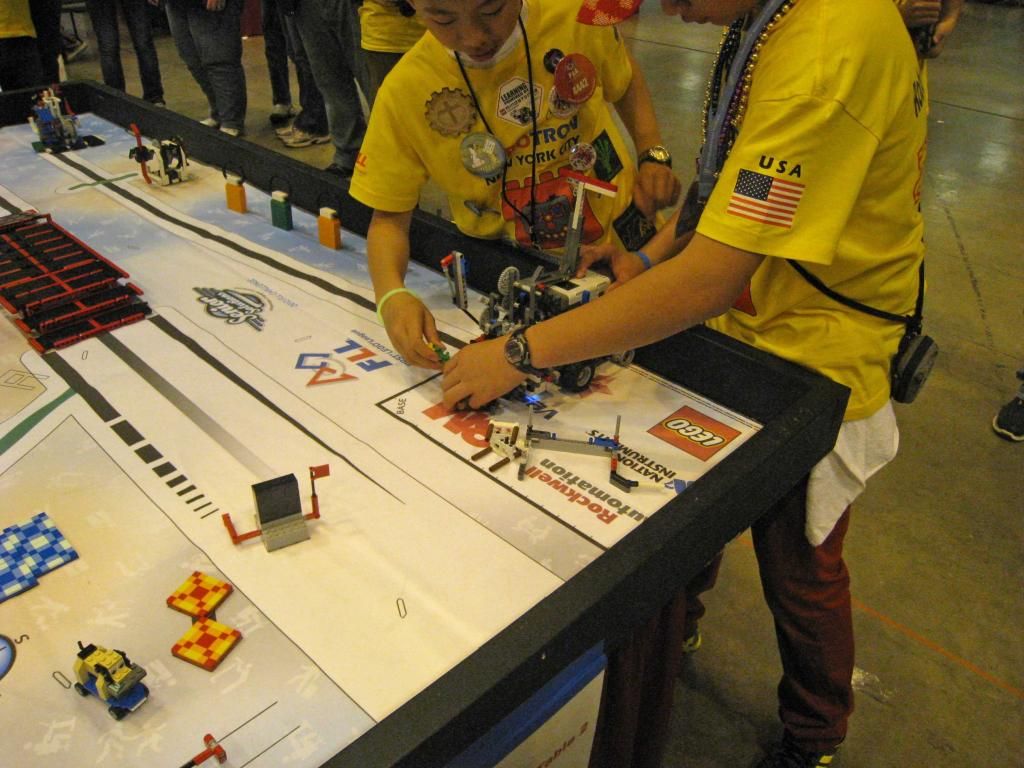
We zipped right through Scholarship row, but the program guide listed over 150 public and private universities offering scholarships to competitors ranging from $500 to $160,000! The next area were the sponsor/exhibiters. Last year, this was Fritz’s favorite area controlling the U.S. Army robots. They weren’t here this year but our new favorite were the 3D writing machines. Instead of ink, they were fed a plastic filament that melted at the tip and re-hardened to show the path of the pen.
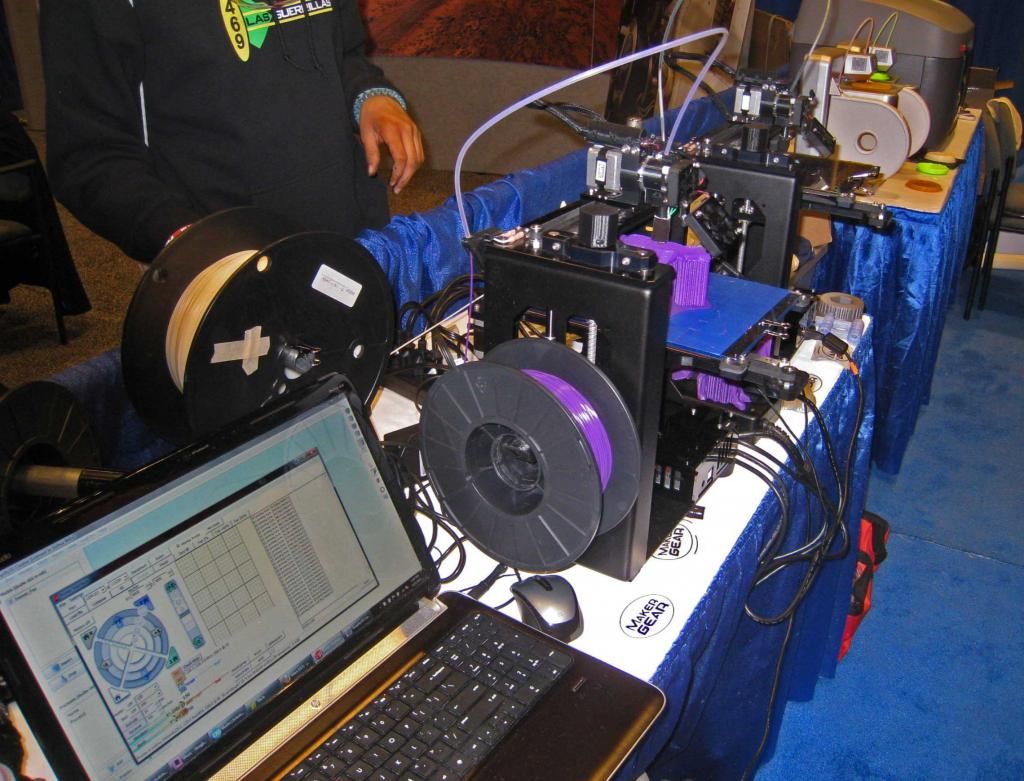
I’m sure they have a great industrial application, but I couldn’t help seeing how beautiful some of the designs were.
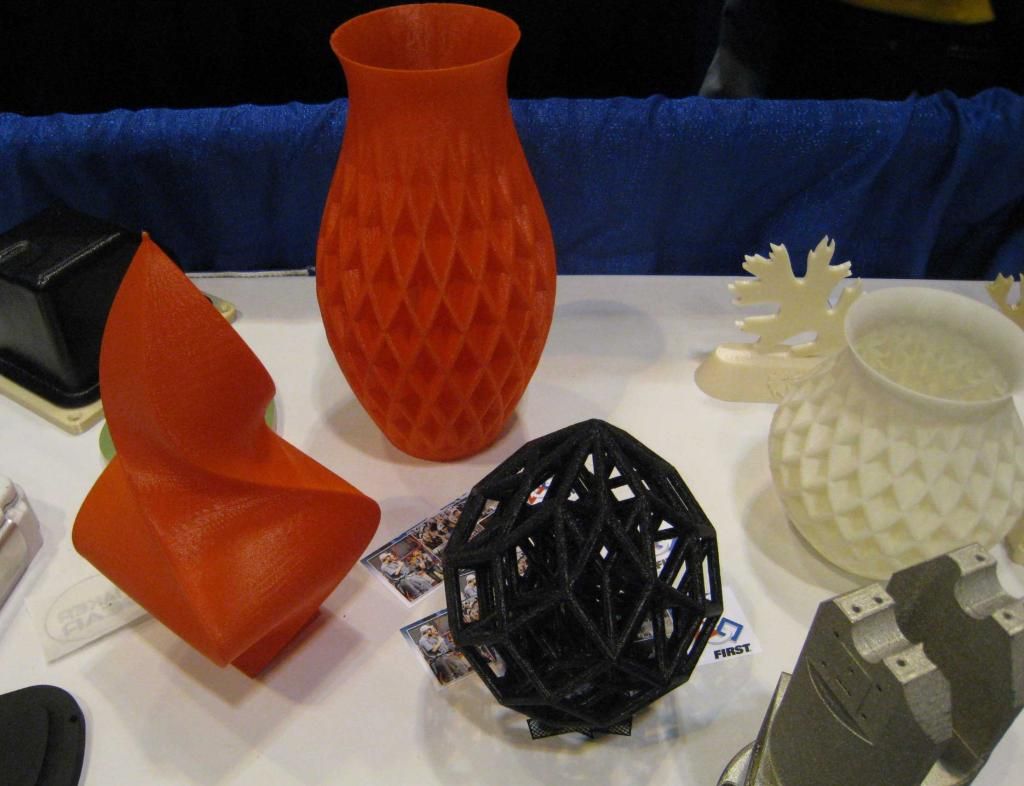
The other exhibitor attracting large crowds was Legos, of course! Want to see what the “must have” toy for Christmas 2013 will be? They’re coming out with a new Mindstorms robotic set.
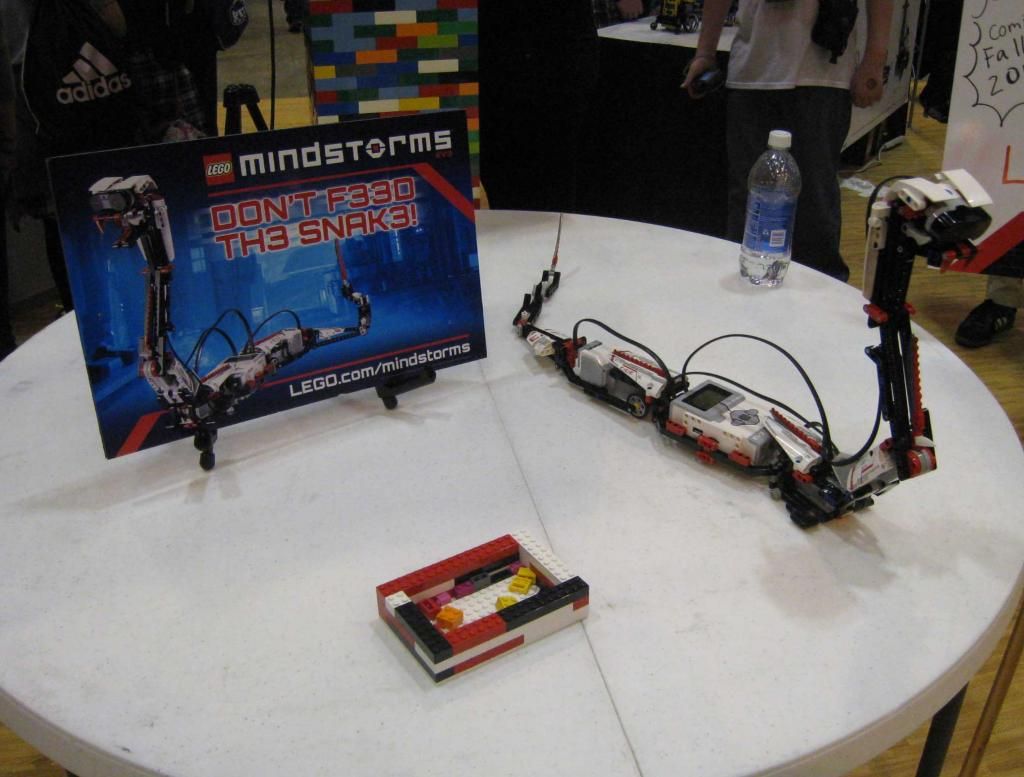
Of course, the bulk of the space is devoted to competitor’s pits—part workshop, part party space. They are usually decorated to match the team name or country of origin. There is an Olympic Village sort of atmosphere where most have buttons or pins to trade. Some have games for the public to play (we took a quiz to see how much we knew about the English city of Bath). You can watch teams calibrate their robots on individual practice courts and team practice fields as well.

This year’s game seems much harder to me. Instead of throwing foam basketballs which are symmetrical and (I assume) aerodynamically constant, the robots must fling Frisbees into narrow boxes. The one in the picture above looks lit up, but that must be some sort of optical tape that the robots visual sensors can detect. Now your dealing with an object that must be right side up and spinning while in flight. The second part of the challenge is to make a robot that can climb the pyramid structure. Schnickelfritz couldn’t take it any longer, we had to go to the competition area in the arena.
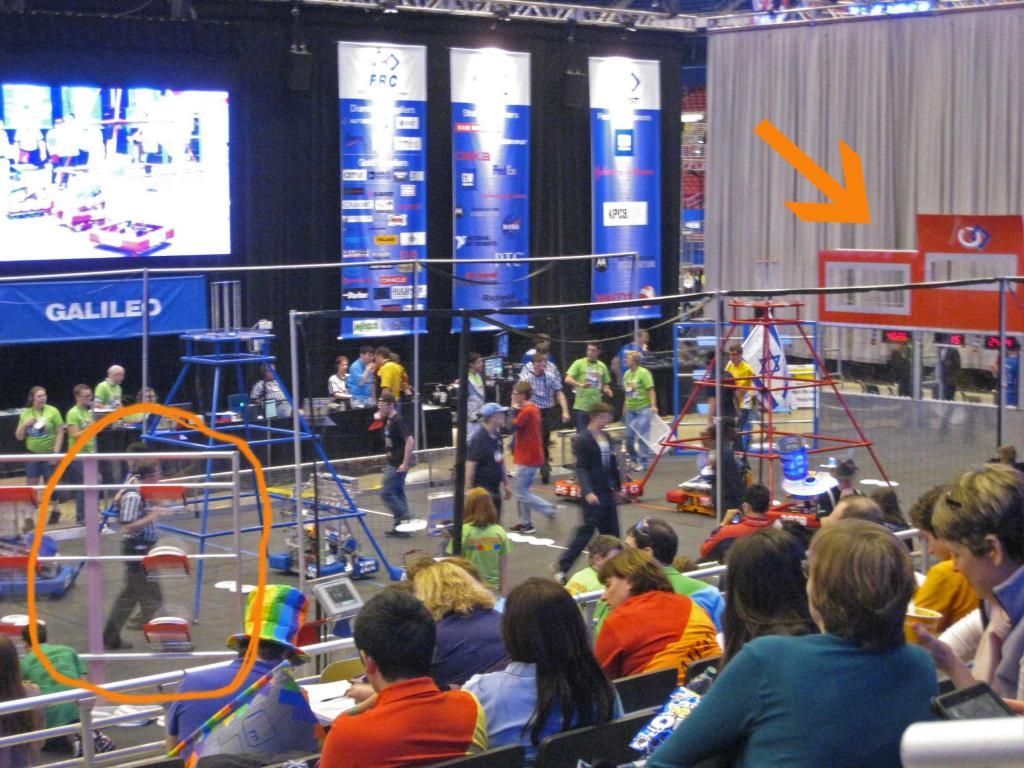
Some teams chose the more difficult but faster route of designing their robots to pick up Frisbees off the ground near the scoring boxes. Others chose to use humans to load up the robots at “feeding slots” like what I’ve circled in orange above, across the field from their goal (with the arrow). Of course, some had the best of both worlds and had calibrated their machines to fling Frisbees from the feeding area, sailing the entire length of the court. The game lasts 2 minutes and 15 seconds and a buzzer sounds with thirty seconds to go so teams can attempt the pyramid climb. Most teams were content to hang from the bottom rung and collect 10 points. A few built multi arm systems (two to hang from and two to reach higher) and made it to the very top.
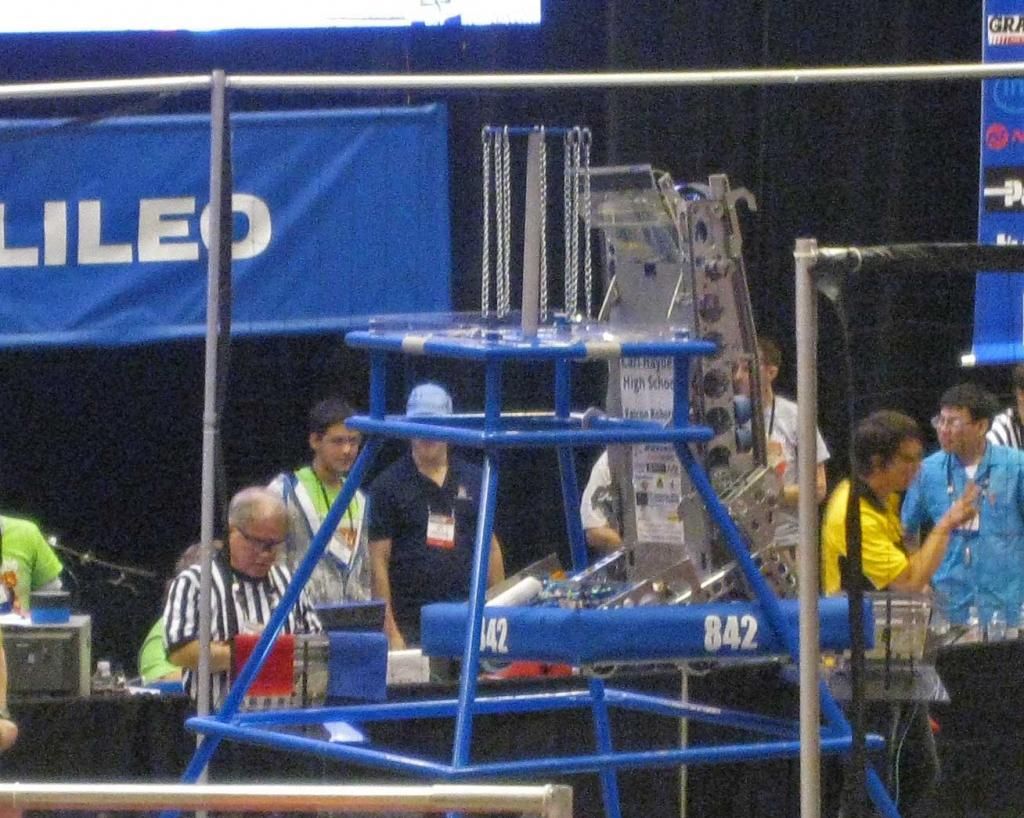
Thursday was the qualification rounds. Each team compete with two others on an “alliance.” The highest scoring individual teams than get to pick to others to compete with in the elimination rounds so their were scores of kids around “scouting” potential partners. So there’s strategy going on along with engineering—do you want to partner with a climbing team or one with good Frisbee aim? Some teams focused on defense bumping in to other robots and blocking shots with nets.
The arena can get a little raucous with four FRC fields, four FTC fields and eight JLL tables going on at once. There’s also loud music and beach balls being batted around in the stands. When we needed a break we could always go back to the basics—a boy and a huge tub of Lego bricks.
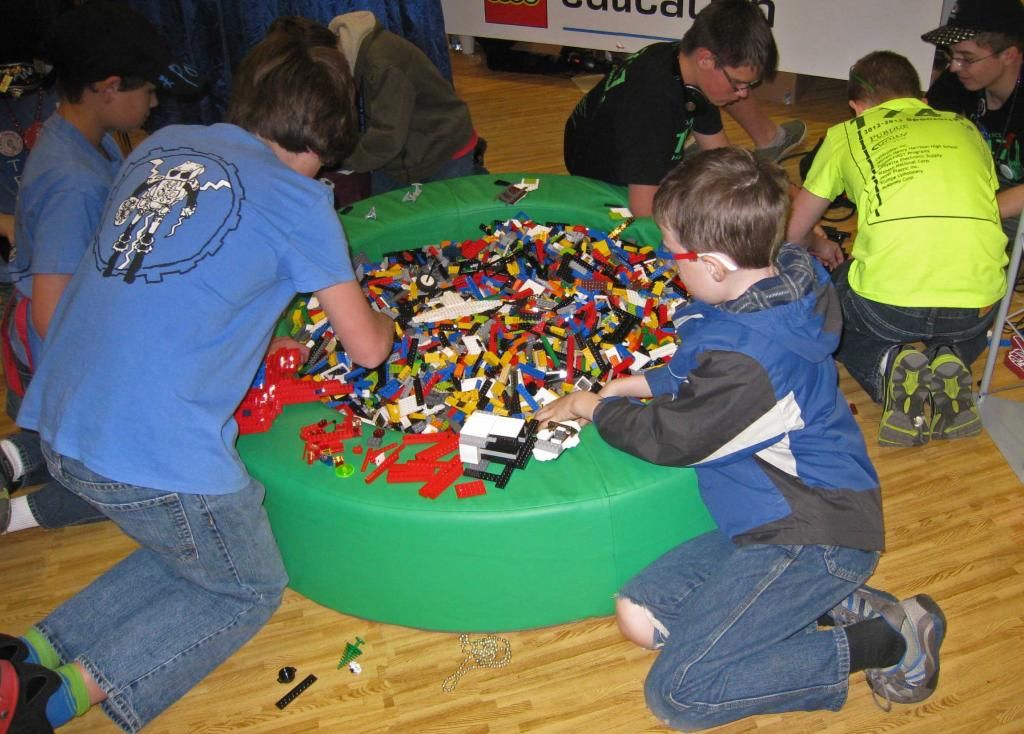
If you live in the St. Louis area, there still a chance to attend today or tomorrow—the event is free to the public. If not this year, be sure to put it on the calendar for next year (Yes they're coming back to St. Louis again April 23-26. 2014!)
Technorati Tags: Field Trip

2 comments:
How fun! My kids would love this. Especially the Legos. :)
This looks amazing and my boys would have a blast. What a great event!
Post a Comment